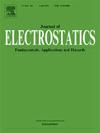利用机器学习的均匀电场优化设计方法
IF 1.9
4区 工程技术
Q3 ENGINEERING, ELECTRICAL & ELECTRONIC
引用次数: 0
摘要
工程领域对均匀电场(UEF)的要求非常高,尤其是在高压设备中。现有方法在优化区域和普遍性方面存在局限性。在此,我们提出了一种基于电磁场有限元计算和机器学习的均匀电场设计方法。首先,使用有限元软件计算并绘制使用三个电极形状参数(ESP)确定的板对板电极结构的电场分布。随后,我们创建了一个包含 2000 张图像的数据集,这些图像使用不同的 ESP 呈现不同的电场强度分布。然后,我们采用图像处理技术,从图像的灰度信息中提取出九个统计特征。通过机器学习训练模型,根据灰度特征(GLF)预测静电除尘器。最后,人为选择预期理想均匀场的电场强度分布图像。此外,模型还能预测产生均匀电场的 ESP。所提出的方法为优化均匀电场的设计提供了精确的解决方案,也为解决电场逆问题提供了新的方法。这涉及绘制高压工程所需的电场强度分布图像,并获得所需的静电除尘器。本文章由计算机程序翻译,如有差异,请以英文原文为准。
Uniform electric-field optimal design method using machine learning
The demand for uniform electric fields (UEFs) in engineering is very high, particularly in high-voltage devices. The existing methods encounter limitations in terms of optimization region and universality. Herein, we propose a method for designing UEFs based on finite element calculations of electromagnetic fields and machine learning. First, the electric-field distribution of the plate-to-plate electrode structure determined using three electrode-shape parameters (ESPs) is calculated using finite element software and is drawn. Thereafter, a dataset of 2000 images is created with different electric-field strength distributions using various ESPs. Net, we employ image-processing techniques to extract nine statistical features from the gray-level information in the images. Models are trained through machine learning to predict ESPs based on the gray-level features (GLFs). Finally, the electric-field strength distribution image of the expected ideal uniform field is artificially selected. In addition, the ESPs from which the uniform electric-field is produced are predicted by the models. The proposed method provides an accurate solution for optimizing the design of a uniform electric-field and a new approach for solving inverse problems of electric-field. This involves drawing the required electric-field strength distribution image for high-voltage engineering and obtaining the required ESPs.
求助全文
通过发布文献求助,成功后即可免费获取论文全文。
去求助
来源期刊

Journal of Electrostatics
工程技术-工程:电子与电气
CiteScore
4.00
自引率
11.10%
发文量
81
审稿时长
49 days
期刊介绍:
The Journal of Electrostatics is the leading forum for publishing research findings that advance knowledge in the field of electrostatics. We invite submissions in the following areas:
Electrostatic charge separation processes.
Electrostatic manipulation of particles, droplets, and biological cells.
Electrostatically driven or controlled fluid flow.
Electrostatics in the gas phase.
 求助内容:
求助内容: 应助结果提醒方式:
应助结果提醒方式:


